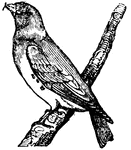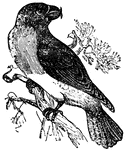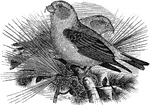Clipart tagged: ‘Crossbill’

Crossbill
Known for their distinct crossed bill, these birds eat seed from mature conifer cones. Their unique…

Crossbill
Known for their distinct crossed bill, these birds eat seed from mature conifer cones. Their unique…

American Red Crossbill
"Loxai curvirostra. American Red Crossbill. Red; wings and tail blackish, without white markings. Middle…

White-winged Crossbill
"Loxia leucoptera. White-winged Crossbill. Rosy-red, sometimes carmined or even crimsoned, obscured…
